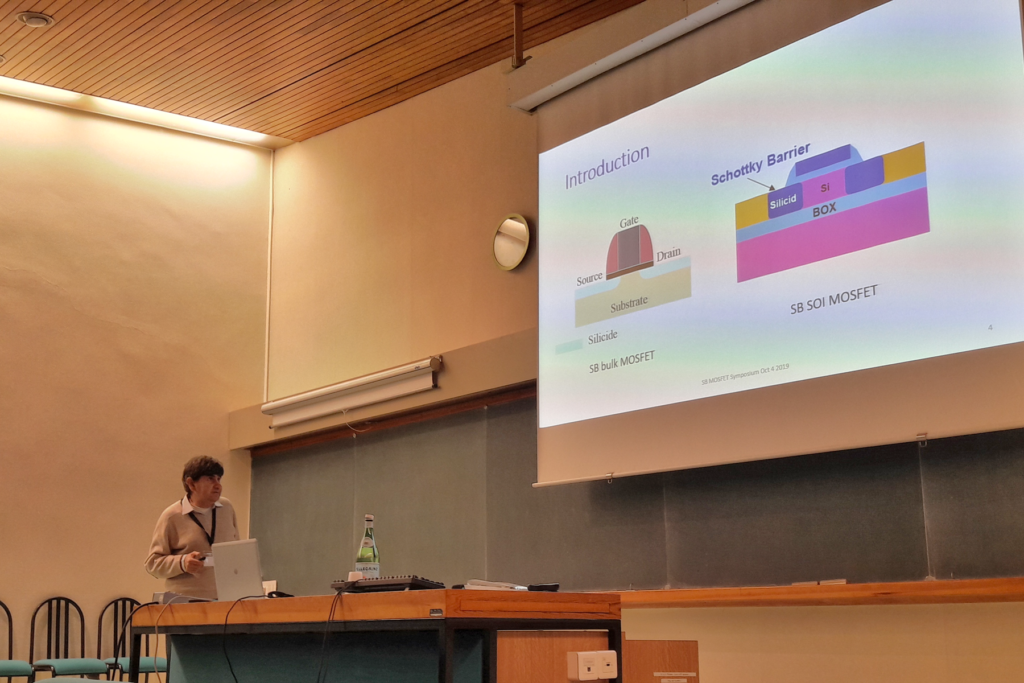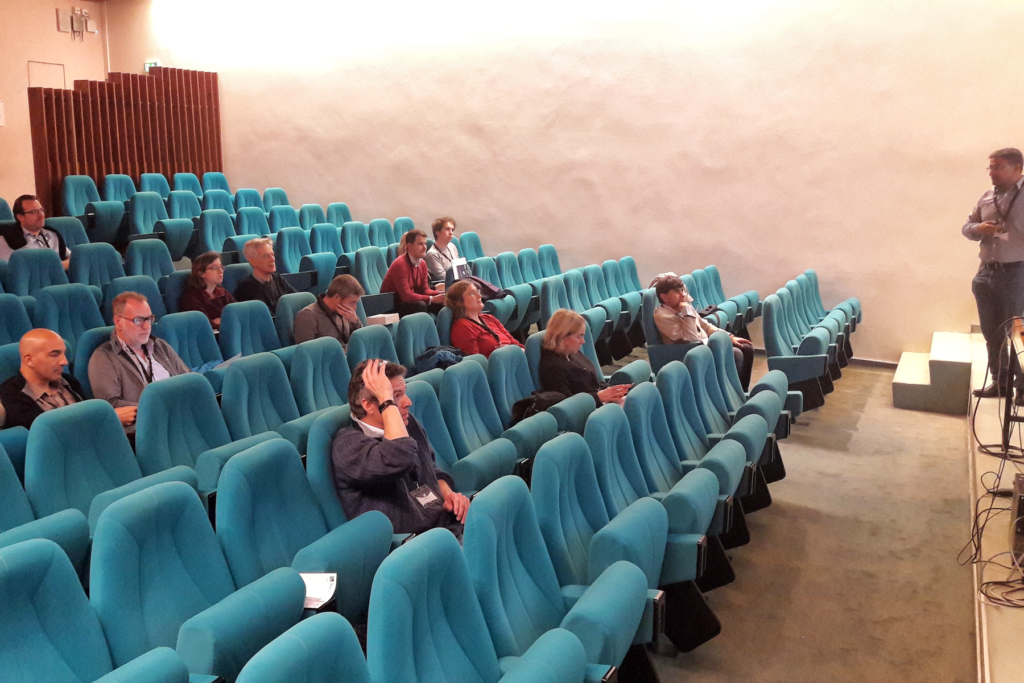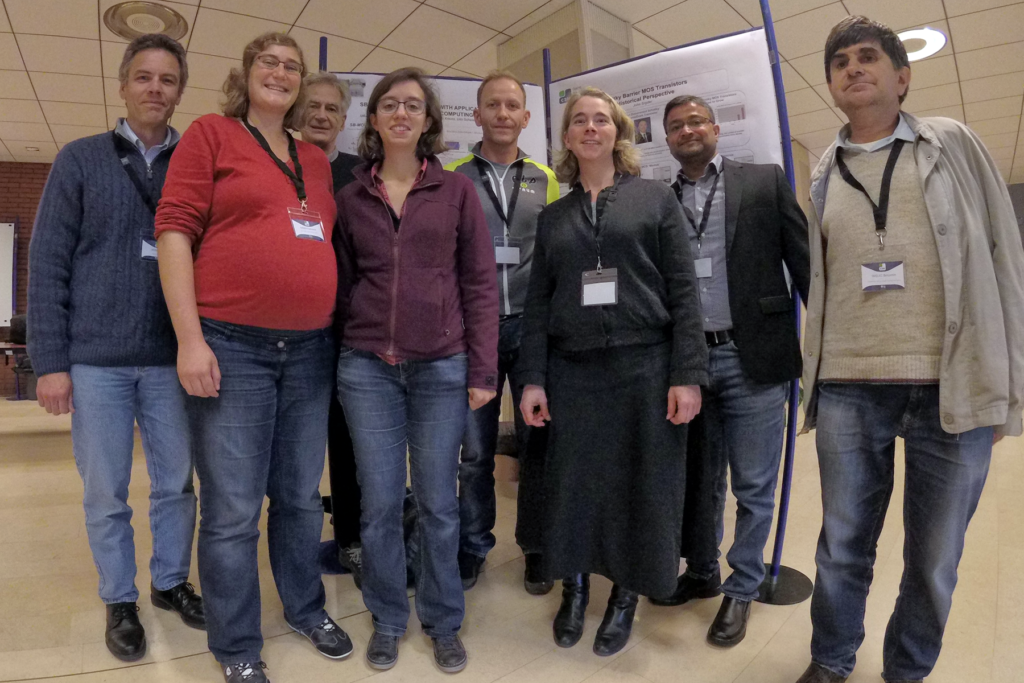Symposium on Schottky barrier MOS devices “Towards neuromorphic and quantum computing applications”
The 3rd Symposium on Schottky barrier MOS devices was held on October 4th, 2019 at the Amphi Bloch, Orme de Merisiers-CEA, Gif-sur Yvette, France. It was sponsored by Nanosaclay, the EDS French chapter, IEEE Young Professionals Germany Affinity Group, Silvaco Europe Ltd., Robert Bosch GmbH and hosted by Drs. Laurie E. Calvet and Francesca Chiodi (Center of Nanoscience and Nanotechnology, CNRS-Université Paris-Sud). It was attended by 25 IEEE members, with approximately 10 non IEEE members.

The symposium started with a welcome breakfast at Amphi Bloch and introduction of the attendees. Afterwards, Prof. Benjamin Iniguez (DEEEA, Universitaet Rovira I Virgili) gave a distinguished lecture on Schottky Barrier MOSFET devices concentrating on the device physics with a special focus on modeling.
After a discussion and coffee break, the symposium continued with an inspiring retrospective and current state of the art on SB-MOSFET technology by Dr. John Snyder (JCap, LLC), with a broad overview starting with the work of Walter Schottky in the late 1930s. Afterwards, Dr. Philippe Blaise (Silvaco Inc., France) explained the new atomistic simulation functionality of the Silvaco tool chain, especially for applications concerning 2D materials and the semi-quantitatively extraction of specific resistances of metal-semiconductor interfaces. The morning session ended with a presentation by Dr. Radu Sporea (Surrey, UK) about TFT transistors, the possibility of using source gating and its ability to realize very high gain and increased power-efficiency.

The afternoon session began with a presentation by Dr. Satender Kataria (RWTH Aachen, Germany) on Graphene/Si Schottky diodes and the impact of quantum efficiency of photondetectors. Next, Prof. Denis Flandré (UC Louvain, Belgium) provided a detailed and thorough impressive investigation on the figures of merit of cryogenic nanoscale transistors, with the idea of using them for quantum computing applications. Dr. Francesca Chiodi (C2N, CNRS-Université Paris-Sud) then gave an overview on how laser doping using excimer lasers can be used to realize superconducting silicon and a discussion of all silicon josephson jucntions. Dr. François Lefloch (CEA, Grenoble) then provided an overview of how SB-MOSFETs can be turned into Josephson junctions for quantum computing applications when the PtSi silicide becomes superconducting below 1K. The quantum computing section then concluded with a very clear seminar by Dr. Fabrice Nemouchi (CEA, Grenoble) on Qubits using SB-MOSFETs. He referred to engineering of the metal-semiconductor interface, spin qubits and technology aspects e.g. annealing impacts in metal-semiconductor interfaces.

The last two talks on neuromorphic applications were given by Dr. Laurie Calvet (C2N, Palaiseau, France) and Dr. Mike Schwarz (Robert Bosch GmbH, NanoP THM, Germany). After an introduction to neuromorphic hardware, Dr. Calvet discussed why SB-MOS devices have advantages over conventional devices. Afterwards, Dr. Schwarz closed the symposium with his talk on SB-MOS device modeling and its application to neuromorphic computing, focusing on how to extract important characteristics from device simulations for the optimization of neuromorphic circuits.
